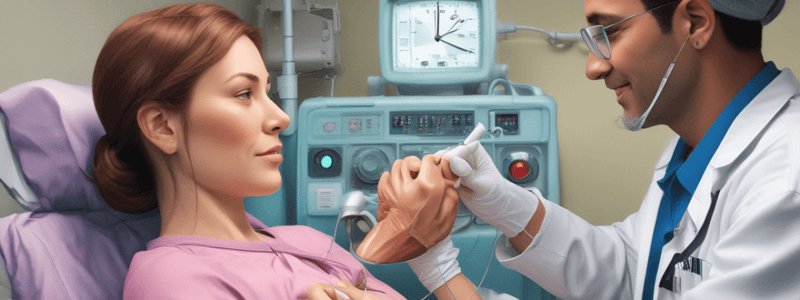Podcast
Questions and Answers
What is the first step in treating laryngospasm?
What is the first step in treating laryngospasm?
- Eliminate upper airway obstruction by head tilt-jaw thrust method (correct)
- Intubate the trachea with a cuffed tube
- Perform laryngoscopy
- Administer IV succinylcholine
What should be done if the head tilt-jaw thrust method is not beneficial?
What should be done if the head tilt-jaw thrust method is not beneficial?
- Insert a nasopharyngeal or oropharyngeal airway (correct)
- Perform a cricothyrotomy
- Begin chest compressions
- Administer epinephrine
How should a complete laryngospasm that persists despite initial maneuvers be treated?
How should a complete laryngospasm that persists despite initial maneuvers be treated?
- Increase oxygen supply
- Apply positive pressure ventilation
- Administer IV succinylcholine, laryngoscopy and intubation of the trachea with a cuffed tube (correct)
- Give intravenous fluids
What should be done if intubation is impossible during a laryngospasm?
What should be done if intubation is impossible during a laryngospasm?
What is the role of IV succinylcholine in treating laryngospasm?
What is the role of IV succinylcholine in treating laryngospasm?
Flashcards are hidden until you start studying
Study Notes
Treatment of Laryngospasm
- Head tilt-jaw thrust method is used to eliminate upper airway obstruction
- If the above method is not effective, a nasopharyngeal or oropharyngeal airway is inserted
- IV succinylcholine is administered to treat complete laryngospasm that persists despite above maneuvers
- Laryngoscopy and intubation of the trachea with a cuffed tube is performed subsequently
- If intubation is impossible, cricothyrotomy is performed as a last resort
Studying That Suits You
Use AI to generate personalized quizzes and flashcards to suit your learning preferences.




